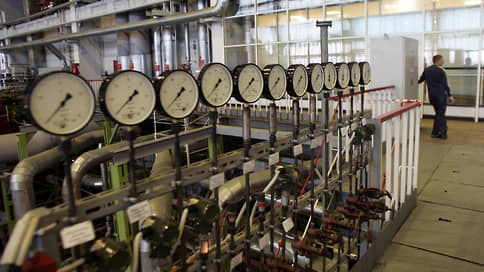FAS wants to allow regions to leave heat supply price zones where a market tariff setting model is applied
[ad_1]

As Kommersant found out, the FAS wants to allow regions to unilaterally leave heat supply price zones where a market tariff setting model is used (the “alternative boiler room” method). The service cites complaints from regions due to a sharp increase in heat prices and claims from the prosecutor’s office. 37 cities with a planned investment volume of 285 billion rubles have already moved to price zones. The Ministry of Energy opposes the initiative, calling price zones the only transparent mechanism for attracting investment. In addition, it is unclear how the regions will return the money already invested to investors.
FAS proposes to develop a mechanism for the unilateral withdrawal of regions from heat supply price zones, in which market tariff formation is used for the modernization of heating networks. This was stated by the head of the housing and communal services regulation department, Alexey Matyukhin, on October 24, speaking at a round table within the framework of the All-Russian Tariff Conference in Sochi. He referred to complaints from the regions about a sharp increase in heat prices, as well as ongoing inspections by the prosecutor’s office in the constituent entities of the Russian Federation, according to Kommersant’s interlocutors familiar with the course of the meeting.
According to Kommersant, the FAS proposes to develop criteria, subject to which the region will be able to leave the “alt boiler room”. The service formulated such a proposal as part of the implementation of the order of Deputy Prime Minister Alexander Novak to improve the “alt-boiler” model (“Kommersant saw the document dated July 13”).
The FAS explained to Kommersant that the development of a way out of the “alt boiler house” is aimed at protecting the interests of consumers, since there is an example with signs of establishing monopolistic high prices for heat. FAS plans to develop a procedure taking into account compliance with the guarantees and obligations assumed by the regions and energy companies.
The “alt boiler room” method started working in 2018. The investor invests money in infrastructure, and in return sells heat at a negotiated price, which gradually increases according to schedule to an economically feasible level. By the beginning of 2023, 37 cities in 18 regions had moved to price zones. The total volume of planned investments is more than 285 billion rubles. in 10–15 years. In fact, more than 46 billion rubles have already been invested.
The Ministry of Energy told Kommersant that they are against the initiative. According to the ministry, the “alt boiler room” is the only transparent mechanism that ensures an influx of investment in the heat supply sector. The “classical” system of tariff regulation does not provide the required level of investment: according to the FAS, in 2022 only 80% of the needs were attracted to the industry (112 billion out of 139 billion rubles).
The Ministry of Energy fears that investors will lose confidence in the mechanism. There is also the problem of returning investments already made, the Ministry of Energy continues. Leaving the heat supply price zone will require the formation of a compensation mechanism for advanced investments, which will lead to an increase in risks associated with the uncertainty of return on investment and a decrease in the attractiveness of the heat supply sector.
The possibility of leaving the boiler room should exist, for example, in case of failure to fulfill obligations, believes Ilya Dolmatov, director of the Institute of Economics and Regulation of Infrastructure Industries at the National Research University Higher School of Economics. However, the question remains unresolved from which sources to return the actual investments. One option is compensation through the regional or municipal budget, the analyst notes.
The Siberian Generating Company (SGK, part of SUEK) told Kommersant that the main incentive for the company to move to a price zone in a number of cities was a guarantee of stability and predictability of conditions. The mechanism of the “alt boiler room” is transparent and controllable by the authorities, since the investor openly reports on all investments, they say. T Plus and RusHydro did not answer Kommersant.
FAS statements about mass complaints about the “alt boiler room” are exaggerated, Kommersant’s interlocutors in the industry say. So far, only legal proceedings against SGC in Khakassia are known. The authorities of Abakan and the prosecutor’s office of Chernogorsk accused SGK of unreasonably inflating heat prices. In Abakan, the growth was 11%, in Chernogorsk – 12%, which is lower than the actual inflation at the end of 2022 (13.9%). For regulated companies outside the alt-boiler room, tariffs increased according to the index of 9%.
City authorities indicated that they had entered into agreements with the Yenisei TGC (part of the SGC), under which it was assumed that a reduction factor would be applied in the event of certain inflation fluctuations. But SGK separated the Abakan CHPP into a separate legal entity, and, in the opinion of SGK, the authorities must sign new agreements. SGK won the court of first instance in Chernogorsk; the trial in Abakan continues.
[ad_2]
Source link





